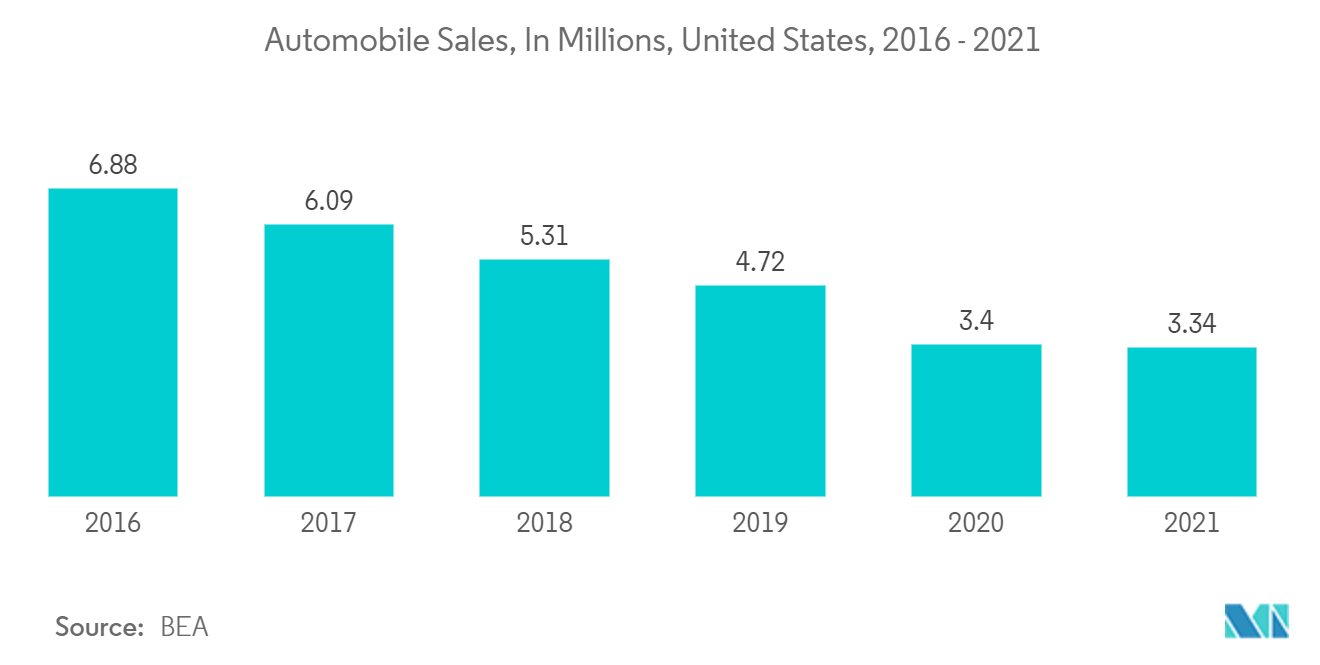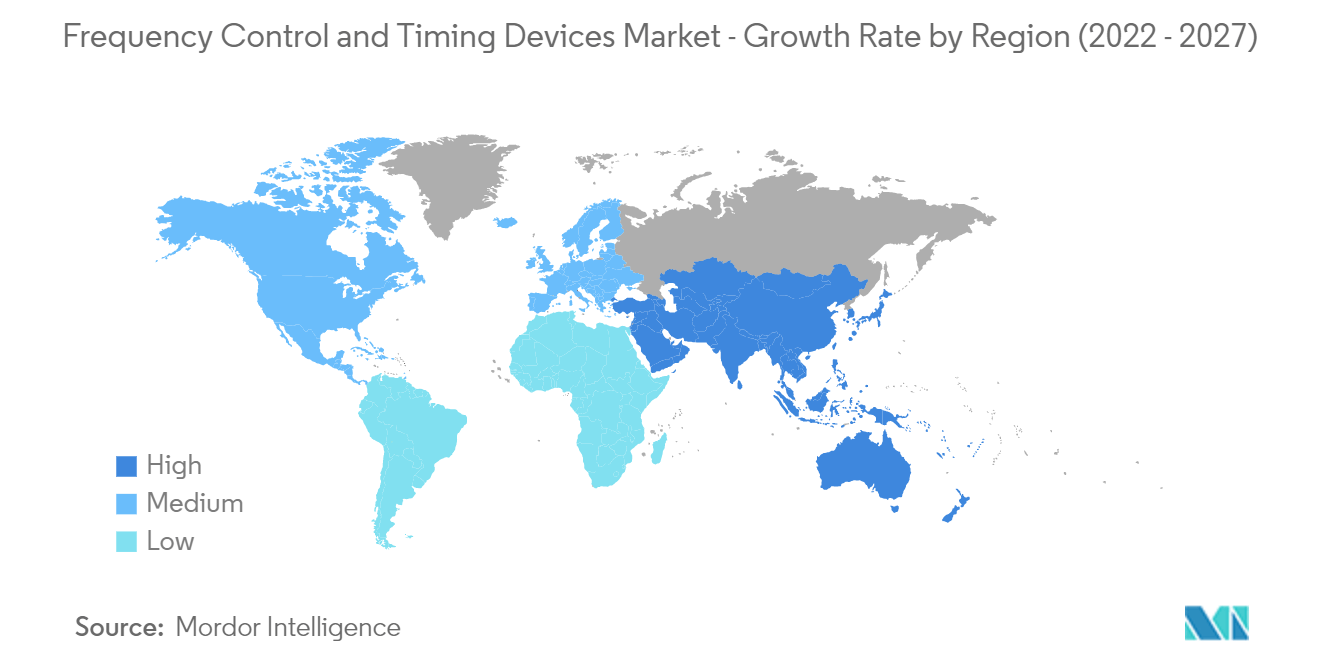Market Trends of Frequency Control and Timing Devices Industry
This section covers the major market trends shaping the Frequency Control & Timing Devices Market according to our research experts:
Automotive Industry Segment is Expected to Hold a Significant Market Share
- In the automotive sector, frequency control and timing devices are used for ADAS (Advanced Driver Assistance Systems), Light Detection and Ranging (LiDAR), autonomous driving, infotainment systems, in-vehicle ethernet, engine control modules, and instrument clusters, among others. The increasing demand for jitter-free crystal oscillators is indicative of the growing demand for automotive applications.
- In mid-2020, Epson's SG2520CAA launched a Simple Packaged Crystal Oscillator (SPXO) and Temperature Compensated Crystal Oscillator (TCXO) with CMOS output. Being ideal for automotive and high-reliability applications, it conforms to AEC-Q200. This device has low current consumption, a wide operating voltage from 1.6 V to 3.63 V, and wide operating temperatures ranging from -40 °C to 85 °C. Within the automotive sector, it finds applications in ADAS (Advanced Driver Assistance Systems); that is, Camera, LiDAR (Light Detection and Ranging), radar, networking & Automotive Infotainment systems, such as audio, clock, meter, cluster, and body control (BCM).
- Recently, at the beginning of 2022, as an impact of the COVID-19 pandemic, multiple reports indicated that automotive companies, such as Honda, Ford, Toyota, BWM, and GM would reduce the production outputs of new vehicles or stop production lines entirely. The cause of the halt stems from a shortage of automotive-grade semiconductors, with six months being a tentative timeline to get levels back to normal.
- Further, the automobile manufacturers are observed to be shifting to simplified clock tree designs, such as automotive-grade low-jitter, any-frequency clock generators, and buffers. Hence, instead of deploying more numbers of oscillators, clock generators and buffers will work more effectively.
- In December 2021, Renesas Electronics Corporation, a premier supplier of advanced semiconductor solutions, announced two new timing devices and controllers designed for automotive actuator and sensor control applications supporting edge evolution in next-generation electronic and electrical (E/E) architecture. With the new RL78/F24 and RL78/F23, Renesas expands its RL78 Family of low-power 16-bit controllers and timing devices and strengthens its broader automotive portfolio, offering customers highly reliable, high-performance solutions for systems ranging from actuators to zone control.

Asia-Pacific to Hold Significant Market Share
- China is one of the key markets for frequency control and timing devices globally, owing to its strong position in consumer electronics, semiconductors, and other telecommunications devices and equipment manufacturing. The country is one of the significant consumers and producers of global crystal and MEMS oscillators. Over the past few years, the country's adoption of temperature-compensated oscillators was the highest in the country, as the country was developing specialized oscillators specifically for advanced consumer electronics products.
- During Mobile World Congress Shanghai 2021, the government announced that Chinese carriers had invested more than CNY 260 billion to build the world's largest 5G network. The growth rate of telecom business revenue has increased significantly. As per the Ministry of Industry and Information Technology (MIIT), The telecom sector rose 8 percent year-on-year to CNY 1.47 trillion (about USD 232.43 billion) in 2021, with the growth rate up 4.1 percentage points from 2020.
- Moreover, South Korea is also home to some of the largest consumer electronic companies in the region, such as LG and Samsung. These companies are some of the significant adopters of frequency control and timing devices at the global level. Many South Korean consumer electronics manufacturers, including LG Electronics and Samsung Electronics, are relocating their manufacturing facilities to other countries. The trend is expected to accelerate due to mounting trade protectionism and the rigidity and low productivity of the country's labor market, represented by an exceptionally rapid increase in the minimum wage.
- Additionally, Members of the Association of Southeast Asian Nations continue to roll out their 5G masterplans, with Singapore, for example, still on track to achieve nationwide 5G coverage by 2025. As well as providing consumers with faster connection speeds, lower latency, and more bandwidth, 5G has been touted as a revolutionary upgrade that would enable a wide range of new digital applications like IoT, smart cities, driverless cars, robotic appliances, and augmented reality. These initiatives further boost the studied market for the region.
- Further, according to Singapore's Infocomm Media Development Authority, the country was to launch two standalone 5G networks in 2021. It will build a 5G network that can cover half of the country by the end of 2022 and the entire country by the end of 2025. This project is currently bid on by an associated company formed by Singtel, StarHub, and M1. Other mobile network operators would purchase the right to use the 5G network.

